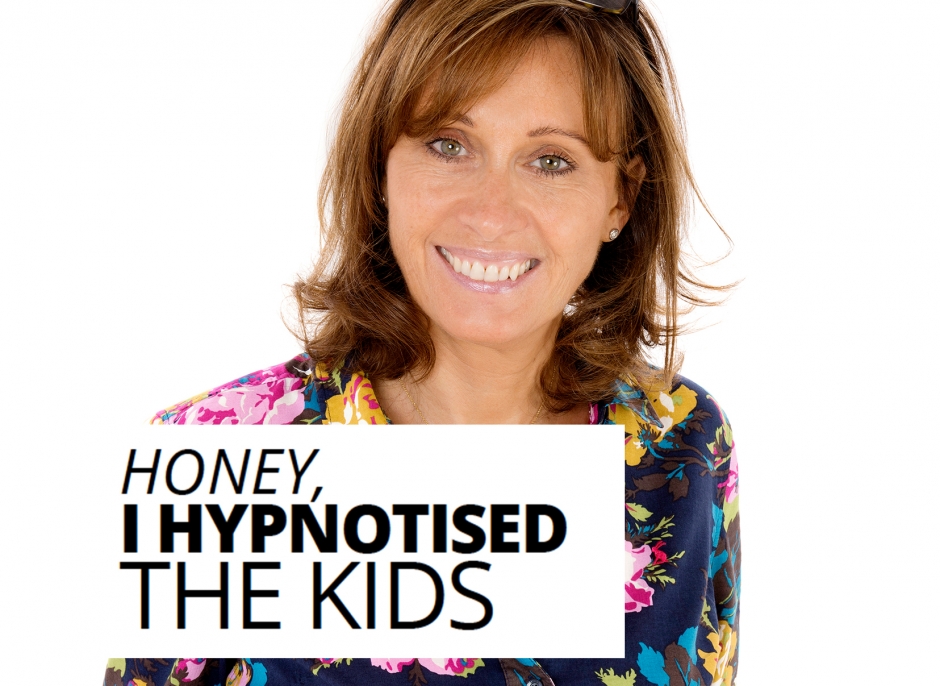Struggling to get your kids to do what you want and need them to do? Alicia Eaton offers expert advice on making a change for the better
For most of us, the idea of hypnotising our children into doing what we want them to do has simply been a bit of a fantasy – just imagine how brilliant it would be if all you had to do was simply click your fingers to get kids to tidy their bedrooms and do their homework!
Well, it might not but be as far-fetched as it sounds. Harley Street clinical hypnotherapist and neuro-linguistic programming (NLP) practitioner Alicia Eaton is also a parenting expert. In her new book, Words that Work – How to Get Kids to Do Almost Anything, she shows how easy it can be to get kids to co-operate, just by changing a few words and the structure of your sentences.
As Eaton explains, “It just seems that too many parents, and teachers for that matter, struggle to get their requests heard, understood and taken seriously nowadays – kids just don’t seem to be able to do as they’re told any more. Learning how to use NLP’s ‘language of persuasion of influence’ on the other hand, can make life so much easier – not only would parents benefit, but with fewer arguments and confrontations, kids would be happier too”.
So whether the issue is mealtime arguments over fussy eating or junk food cravings; an anxiety or phobia about dogs, spiders, wasps, going to school or exams; bad habits such as nail-biting and thumb-sucking; a lack of confidence or shyness, finding a solution to the problem might be as easy as phrasing your request in a different way, using a different set of words. Here are the techniques that Eaton suggests
- Place the word ‘NOW’ at the end of a sentence.
The conscious mind gets confused at hearing the word ‘now’ at the end of a sentence – it’s in the wrong place – and therefore, it gets interpreted as a command. Handy for saying things such as:
“When will you be doing your homework, now?”
“When will you finish playing that computer game, now?”
“When would be a good time to tidy that bedroom of yours, now?”
- Create the illusion of choice
If you’re exhausted with nagging your child to get dressed in the morning, start nudging them in the right direction by offering the illusion of choice:
“Which t-shirt will you be wearing this morning – the blue one or the one with the picture on it?” Or, “Which will you put on first? The trousers or the t-shirt?”
This pre-supposes that the child has agreed to get dressed and overcomes the impasse. Likewise:
“Do you want to work on your school project today or tomorrow?”
“Would you like to organise your school bag before or after supper?”
“Would you like to taste the broccoli or the carrots first?
“Which one will you choose first?” (pre-supposing a choice will be made)
- Reflective listening
Help your child to get into the habit of looking for solutions by reflecting or bouncing the statement back with a positive spin. When your child says: “It’s too hot in here.” Bounce back with: “Ah you’d like to feel cooler? What would make you feel better – opening a window or removing your jacket?”
Or:
Child: “I hate sharing a bedroom.”
Adult: “So, you’d like to have some space to yourself? What is it about having your own space that appeals to you?”
Child: “The room wouldn’t be messy with Lego all over the floor.”
Adult: “OK – so you’d like your sister to tidy her toys and the floor area to be clear?”
These responses result in less moaning, less complaining and are more solution-focused.
- Leading questions
This is a useful language pattern that can take the child from the question being asked, or the statement being made, to the desired solution.
“So, you’ve been feeling worried about your exams – to make yourself aware that you need to do something more about them?”
“I get it – you’ve come to the conclusion that you don’t like any of the vegetables that we eat at home, in order to start experimenting and tasting some new ones.”
“So, you’re talking to me about this now – in order to start making some changes?”
“So, you’re telling me about how much you hated this year’s maths teacher – so you can begin to look forward to the new one you’ll be having when you go back to school?”
- Moving things forward
These useful phrases will help your child to shift from focusing on the negative and start visualising a happy outcome for the future:
“I wonder when you’ll start becoming aware that you feel different.”
“Hey, how good are things going to be once you’ve solved this problem?”
“Which of all the new ideas that you’re rapidly thinking of, do you think you’ll become aware of first?”
“Isn’t it nice to know that those happy feelings are becoming more and more a part of your life?”
“And the most amazing thing about struggling to get over a problem is that once you’ve done it, all of those good, positive feelings will keep moving you forward …..”
“OK, so together we’re going to write out a list of ideas – shall we do this right now or later this afternoon?”
Alicia Eaton is a fully qualified psychotherapist, clinical hypnotherapist and NLP practitioner based in London’s Harley Street helping both adults and children change habits and behaviours for the better. Originally a Montessori teacher who ran her own school, she’s also the best-selling author of Fix Your Life with NLP (Simon & Schuster) and Stop Bedwetting in 7 Days recommended by NHS paediatricians. She provides regular expert comment in TV, radio and print media. Find out more at aliciaeaton.co.uk and success-4-kids.com





